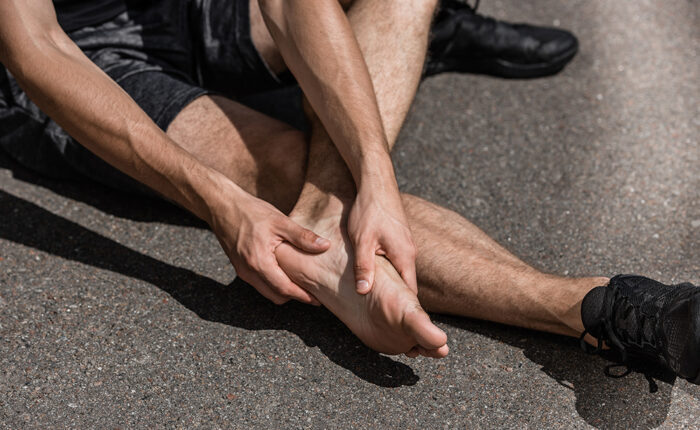Your foot is composed of 26 bones, 33 joints, and more than 100 nerves, ligaments, muscles and tendons. With so many different components on a body part that bears all your weight, you’re bound to feel pain from time to time.
If you’re feeling foot pain, you’re definitely not the only one. In fact, 87% of people will experience painful feet at least once in their life.
Many people associate foot pain with the arch or heel, but nearly any part of the foot can have an ache. If you’re feeling pain on top of your foot, it can be hard to complete your everyday responsibilities as you may have trouble standing or walking. But what is the cause behind this pain? We’re here to help you figure that out.
Read on to learn about potential causes for pain on top of the foot as well as treatment options that can help to alleviate it.
7 potential causes for pain at the top of your foot
There are quite a few reasons why you could be feeling pain on the top of your foot. Potential explanations can range from injuries caused by sports to gradual onset conditions that may require further medical assistance.
Here are 7 potential explanations behind pain at the top of your foot:
- Nerve damage — You have a nerve, called a peroneal nerve, that stems from the sciatic nerve in your legs down to the top of your feet. If this nerve is damaged, pinched or compressed, you may experience numbness, tingling or pain in the top of your foot.
- Stress fracture — If you’re putting repetitive force on your foot by running, kicking or jumping, you may cause a small fracture in the bones that are located at the top of your foot, called the metatarsal bones. The pain is often coupled with swelling.
- Tibialis anterior tendinitis — The tendon at the front of the ankle, called the tibialis anterior tendon, lifts up the foot. Tibialis anterior tendinitis refers to the inflammation of the tendon due to overuse. It can cause pain at the top of the foot and front of the ankle that worsens after rest.
- Extensor tendinitis — The tendons that run along the top of the foot and pull the foot upward are called the extensor tendons. They can become inflamed, which is called extensor tendinitis, due to extended periods of time on your feet, tight shoes or flat feet.
- Sinus tarsi syndrome — The bony channel located between your ankle and heel is called the sinus tarsi. It can develop painful inflammation, called sinus tarsi syndrome, after an ankle sprain or prolonged instability.
- Peripheral neuropathy — The central nervous system is connected to the rest of your body through the peripheral nervous system, and it sends signals to the brain in response to physical sensations. If these nerves are damaged in your feet, you could have peripheral neuropathy, which could send inaccurate pain signals or maybe none at all.
- Bone spurs — You can develop bony growths, called bone spurs, that protrude from the top of the foot. They are most common in people with osteoarthritis because the body is trying to compensate for the deteriorated cartilage between bones by growing more.
How to treat pain at the top of your foot
If you’re trying to alleviate pain at the top of your foot, there are quite a few treatment options that you can explore. While some treatments are self-care options, there are others that need the assistance of a health care professional.
There are a couple of pain management options that you can try from the comfort of your own home. Resting your foot throughout the day can give your nerves and tendons a break from the pressure placed on the foot from carrying your body weight while you stand or walk.
If you sustain an injury, such as a stress fracture, immediately applying ice will numb the area and reduce the blood flow. Apply ice for 20-minute intervals.
When you want to not only manage your current pain, but improve your foot’s overall quality to prevent pain in the future, you should seek the professional assistance of a physical therapist.
A physical therapist can show you exercises that can improve your foot’s strength, flexibility and mobility to reduce the risk of future injury. They can also apply manual therapy techniques where they use their hands to release the tension that could be causing pain in that region.
SOL Physical Therapy + Performance can treat pain at the top of your foot
Pain at the top of your foot can interfere with your daily activities, but we’re here to help you get back to your day-to-day routine. Physical therapy is one of the best ways to alleviate pain in any part of the foot, and that’s where we come in.
Contact our team today for more information or to schedule an initial appointment.


